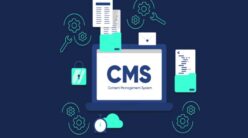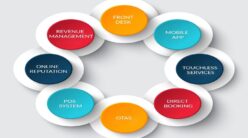
In the data-driven world we live in, dashboards have become the key tools for businesses of all sizes. These visual interfaces are no longer just about presenting numbers; they are about telling compelling stories, driving meaningful actions, and enabling informed decisions. A well-crafted dashboard can empower teams, streamline operations, and uncover hidden opportunities—if designed with purpose.
Yet, not all dashboards are created equal. Some simply display data, while others prompt immediate action. The difference lies in how they are built and used. This blog explores how to build dashboards that truly drive action, with insights especially valuable for professionals and learners who have completed a Business Analysis Course or work in data-centric roles.
What Makes a Dashboard Actionable?
At its core, an actionable dashboard goes beyond passive reporting. It is interactive, dynamic, and designed to highlight what matters most. Actionable dashboards:
- Track the right KPIs aligned with business objectives.
- Provide real-time data to support timely decisions.
- Use clear visuals that are easy to interpret at a glance.
- Include contextual cues, such as benchmarks, targets, or alerts, to enhance the clarity and relevance of the information.
- Enable drill-downs so users can explore root causes.
These elements help transform raw data into actionable insights. A merely informative dashboard can be helpful, but a dashboard that prompts action can be game-changing.
Start with the End in Mind
Before building a dashboard, it is essential to understand its purpose. What decision will it support? Who will use it? What questions does it need to answer?
This goal-oriented approach is often taught in a structured syllabus, where students learn how to gather requirements, align stakeholders, and define success criteria. Whether you are building a dashboard for sales tracking, project status, or customer service, begin with the desired outcome in mind.
Ask questions like:
- What decisions should this dashboard influence?
- What metrics are critical to track performance?
- Who will be using this dashboard daily, and what aspects of it will they be most interested in?
Answering these helps avoid clutter and ensures every element on the dashboard serves a purpose.
Design for Clarity and Focus
Design is not just about aesthetics—it is about communication. An effective dashboard should be visually clean, intuitive, and easy to scan. This is where the art of data visualisation meets the science of human cognition.
Here are some key design principles:
- Use appropriate chart types: Line charts for trends, bar charts for comparisons, pie charts sparingly.
- Limit colour use: Use colour to draw attention or signify performance (for example, red for below target).
- Avoid data overload: Present only the most relevant metrics. Too many widgets can overwhelm users.
- Organise logically: Group related metrics and use whitespace to improve readability.
- Label everything: Axes, legends, and data points should be marked.
Professionals need to enrol in courses that offer hands-on practice in designing user-friendly dashboards that deliver precise insights without visual clutter.
Make Data Interactive and Real-Time
Static dashboards, while informative, limit user engagement. Actionable dashboards often include interactive features that allow users to filter by date, location, department, or other dimensions. This flexibility helps stakeholders explore data from different angles and make personalised decisions.
Moreover, incorporating real-time data streams ensures that decisions are made in the light of the most up-to-date information available. This is particularly useful in industries such as e-commerce, logistics, or financial services, where circumstances can change rapidly.
Most modern dashboard tools, such as Power BI, Tableau, and Looker, support interactivity and real-time updates. Integrating these tools effectively is a skill frequently covered in a Business Analyst Course, where learners are trained to connect data sources, build dynamic visuals, and automate updates.
Highlight Trends and Variances
Data without context can be misleading. To drive action, dashboards must compare current metrics against benchmarks, historical data, or set targets. For example:
- Display current sales vs. monthly target.
- Show customer satisfaction this month vs. the previous month.
- Highlight cost variances against the budget.
- Use conditional formatting (for example, traffic light indicators) to signal whether metrics are on track visually. This way, users can instantly spot anomalies or achievements.
This approach ensures that the dashboard not only displays numbers but tells a story—what is improving, what is falling behind, and where intervention is needed.
Incorporate Alerts and Thresholds
Even the most beautiful dashboard will not drive action if users are not looking at it when something critical happens. This is where automated alerts come in.
Modern dashboard platforms can trigger notifications via email, text, or app when key metrics cross predefined thresholds. For instance, if inventory drops below a safety level or a server goes offline, the system can alert the responsible person in real time.
Such features turn passive monitoring into active engagement. They also help businesses respond more quickly, reducing risks and seizing opportunities before their competitors.
Tailor Dashboards to the Audience
Different stakeholders need different insights. A CEO might want a high-level overview, while a marketing manager may need campaign-specific data. One-size-fits-all dashboards tend to serve no one well.
Segment your dashboards based on user roles. Build executive dashboards with strategic KPIs and departmental dashboards with operational details. This not only improves usability but also ensures that actions taken are relevant to each stakeholder’s responsibilities.
This level of stakeholder alignment is emphasised in any comprehensive Business Analyst Course, as effective communication and stakeholder management are core to business analysis.
Test and Iterate Continuously
Building an actionable dashboard is not a one-time task; it requires ongoing maintenance. As business needs evolve, so should the dashboard. After initial deployment, gather feedback from users. Are they getting the insights they need? Are there redundant metrics or missing data points?
Iterate based on feedback. Track usage metrics—see which dashboards are accessed frequently and which ones are ignored. This helps prioritise enhancements and eliminate wasted effort.
Regular reviews also ensure that dashboards remain aligned with business goals, which may shift due to changes in market conditions, internal developments, or strategic pivots.
Popular Tools for Actionable Dashboards
A wide range of versatile tools is available to build dashboards that drive action. Here are some widely used platforms:
- Power BI: Great for integration with Microsoft products and offers strong visualisation capabilities.
- Tableau: Known for intuitive visual storytelling and interactivity.
- Looker: Provides powerful modelling features and integrates deeply with Google Cloud.
- Qlik Sense: Allows for associative exploration and in-memory analytics.
Familiarity with these platforms is often built through structured learning, where hands-on training accelerates dashboard development skills.
Conclusion
Building dashboards that drive action requires more than just displaying data—it is about delivering the right insights to the right people at the right time. When designed with intent, backed by real-time data, and tailored to end users, dashboards can become strategic assets that guide day-to-day decisions and long-term strategies alike.
Professionals who have completed a Business Analysis Course are well-equipped to lead this transformation. They understand how to gather requirements, select the right metrics, design for usability, and translate insights into action.
In a competitive and ever-evolving business landscape, the ability to build actionable dashboards is not just a technical skill—it is a strategic advantage.
Business Name: ExcelR- Data Science, Data Analytics, Business Analyst Course Training Mumbai
Address: Unit no. 302, 03rd Floor, Ashok Premises, Old Nagardas Rd, Nicolas Wadi Rd, Mogra Village, Gundavali Gaothan, Andheri E, Mumbai, Maharashtra 400069, Phone: 09108238354, Email: [email protected].





